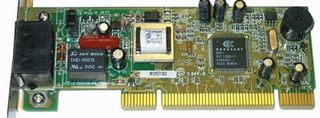Two Xeon CPUs Are Better Than One Intel P4 Extreme Platform
Data Transfer Rates Depending On PCI Standard
| Standard | Bit | Clock | Transfer rates(bi-directional) |
|---|---|---|---|
| PCI 2.3 | 32 Bit | 33 MHz | 133 MB/sec |
| PCI 2.3 | 32 Bit | 66 MHz | 266 MB/sec |
| PCI 64 | 64 Bit | 33 MHz | 266 MB/sec |
| PCI 64 | 64 Bit | 66 MHz | 533 MB/sec |
| PCI-X 1.0 | 64 Bit | 66 MHz | 533 MB/sec |
| PCI-X 1.0 | 64 Bit | 100 MHz | 800 MB/sec |
| PCI-X 1.0 | 64 Bit | 133 MHz | 1066 MB/sec |
| PCI-X 2.0 (DDR) | 64 Bit | 133 MHz | 2132 MB/sec |
| PCI-X 2.0 (QDR) | 64 Bit | 133 MHz | 4264 MB/sec |
| PCI-Express | 1 Lines 8 Bit | 2.5 GHz | 512 MB/sec |
| PCI-Express | 2 Lines 8 Bit | 2.5 GHz | 1 GB/sec |
| PCI-Express | 4 Lines 8 Bit | 2.5 GHz | 2 GB/sec |
| PCI-Express | 8 Lines 8 Bit | 2.5 GHz | 4 GB/sec |
| PCI-Express | 16 Lines 8 Bit | 2.5 GHz | 8 GB/sec |
The HUB 2 connection offers a maximum data transfer rate of 1 GB per second between Southbridge and Northbridge, the following combination possibilities resulting for a maximum interface load for a P64H2 chip:
- 1x PCI-X 133 MHz = 1066 MB/sec
- 1x PCI-X 100 MHz = 800 MB/sec
- 2x PCI-X 66 MHz = 1066 MB/sec
- 2x PCI 64 66 MHz = 1066 MB/sec
- 3x PCI 64 33 MHz = 798 MB/sec
Standard cards do not exhaust data transfer rates of 1,066 MB per second. Only high-performance products, such as SCSI320 cards (320 MB/s) or 10 GB LAN chips (max. 1250 MB per second), would be sensible candidates.
Many PCI cards are capable of performing their services not only with conventional PCI 2.3 slots, but also with a PCI 64 slot. Examples of these are network cards, RAID controllers and even 56K modems. In order to avoid incorrect configurations, they have an additional notch on the connection contacts.

A 56K modem for a 64 bit slot
The 56K modem operates here with conventional 33 MHz in 32 bit mode.

A Promise SATA controller for a 64 bit slot
This Raid controller can handle even 66 MHz in 32 bit mode.
Stay on the Cutting Edge
Join the experts who read Tom's Hardware for the inside track on enthusiast PC tech news — and have for over 25 years. We'll send breaking news and in-depth reviews of CPUs, GPUs, AI, maker hardware and more straight to your inbox.
Current page: Data Transfer Rates Depending On PCI Standard
Prev Page E7505/Placer Chipset Technology In Detail, Continued Next Page Comparison Of Current Workstation Chipsets From IntelTom's Hardware's dedicated news crew consists of both freelancers and staff with decades of experience reporting on the latest developments in CPUs, GPUs, super computing, Raspberry Pis and more.
Most Popular


